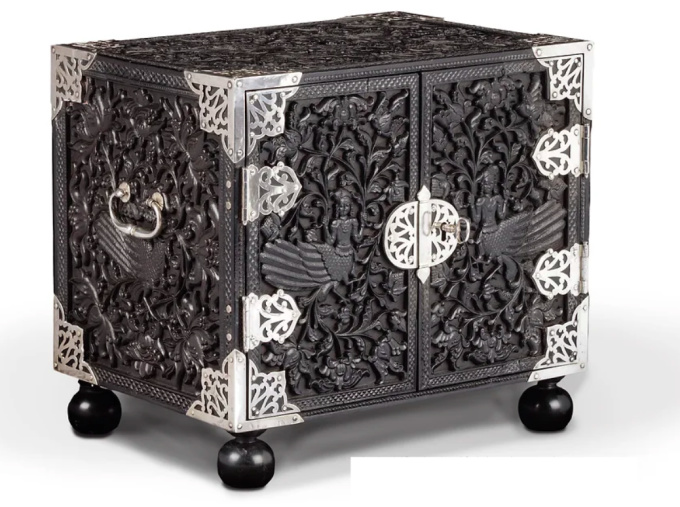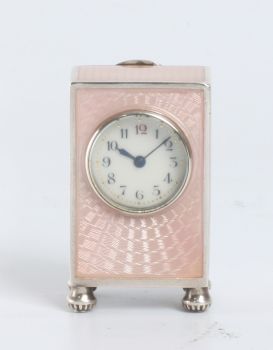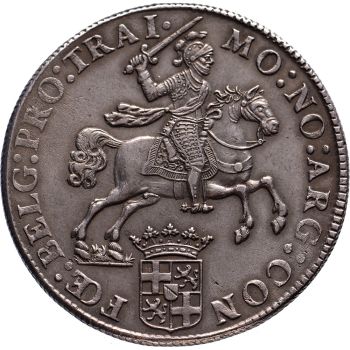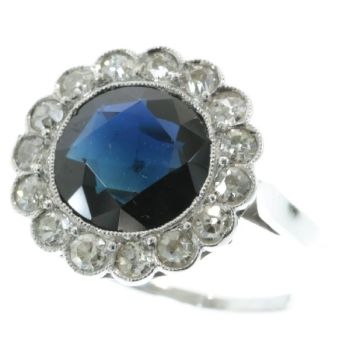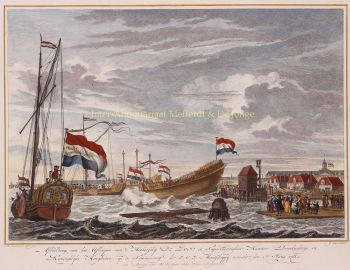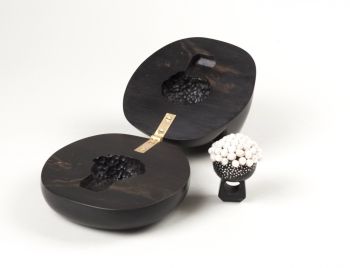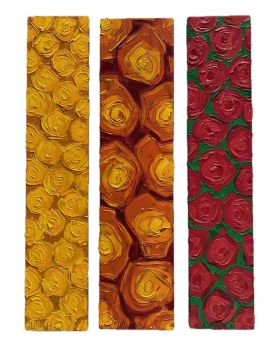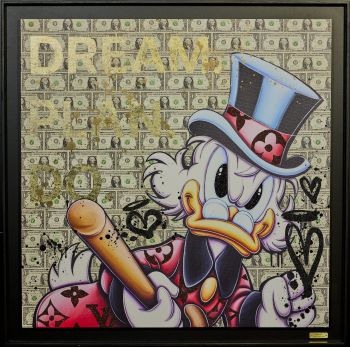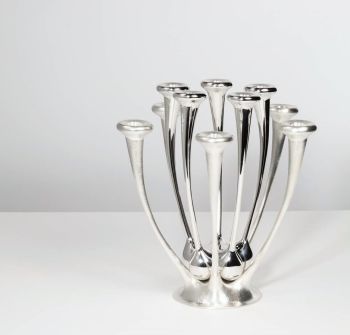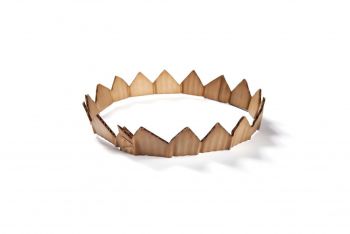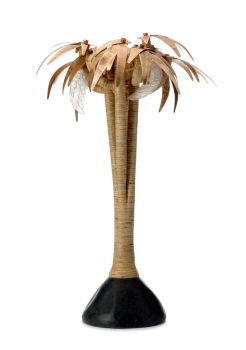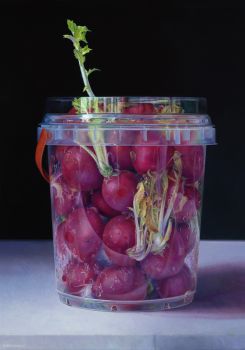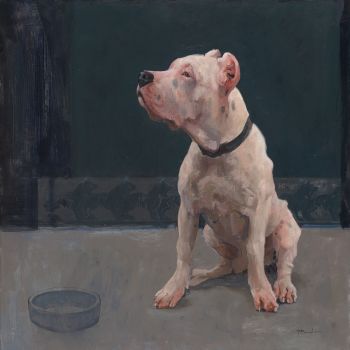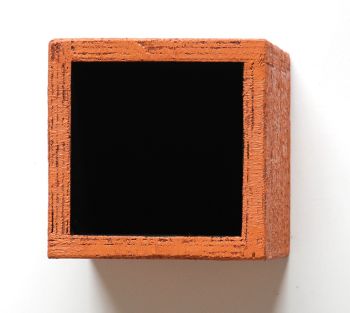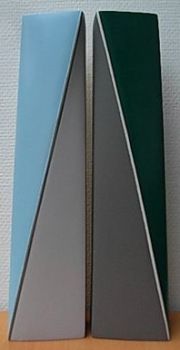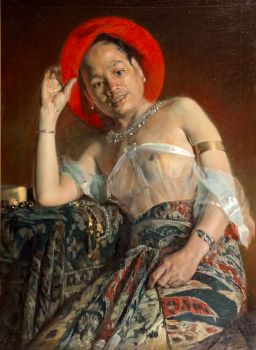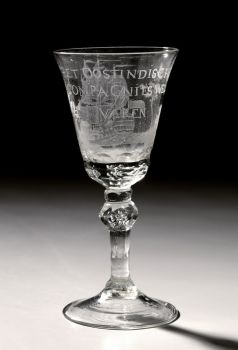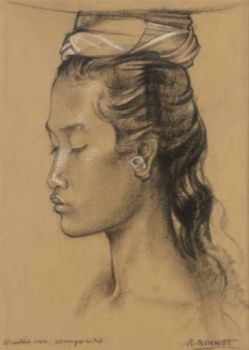A splendid Dutch-colonial Sinhalese ebony two-door cabinet with silver mounts 1600 - 1650
Unknown artist
EbonyWoodSilver
29 ⨯ 32 ⨯ 23 cm
Price on request
Zebregs & Röell - Fine Art - Antiques
- About the artwork
Sri Lanka, Kandy, 2nd half 17th century, the mounts later
The cabinet with a central drawer with hidden compartment and the top drawer divided into four compartments. The surface carved all-over with scrolling plants issuing fleshy lotus palmettes, and in addition the exterior of the doors with a pair of kinnaris, the top with a seated deity encircled by birds, the back with a central lotus rosette flanked by quadrupeds and birds, and lastly the sides with a serapendiya, bordered by narrow diaper kundi rakkan bands.
The richly decorated panels carved in differing degrees of relief reveal the skill of the Sinhalese craftsmen and the scrolls issuing a richness of flowers and fruits are indicative of the island’s vegetal abundance. Their stylization is result of a cross-fertilization of Dutch and Sinhalese decorative elements that appear on furniture, textiles and silver that later appeared across the Asian VOC territories. The mythical kinnaris, serapendiya and the kundi rakkan banding are typical forms of Sinhalese ornamentation, but not often seen on furniture for the Dutch. (Mediaeval Sinhalese Art, Ananda K. Coomaraswamy, Pantheon Books 1908).
For cabinets of similar form and decoration see: Furniture from Indonesia, Sri Lanka and India during the Dutch period, Jan Veenendaal, 1985 pl.25, 29 and 58. Comparable Sinhalese furniture and objects with related carved decoration can be found in the Royal Collection Trust (21610, 21611), the Museum of Fine Arts Boston (1993.29) and the British Museum (1943.0712.4).
Provenance:
Private collection, United Kingdom Peter Lang, United Kingdom - About the artist
It might happen that an artist or maker is unknown.
Some works are not to be determined by whom it is made or it is made by (a group of) craftsmen. Examples are statues from the Ancient Time, furniture, mirroirs, or signatures that are not clear or readible but as well some works are not signed at all.
As well you can find the following description:
•“Attributed to ….” In their opinion probably a work by the artist, at least in part
•“Studio of ….” or “Workshop of” In their opinion a work executed in the studio or workshop of the artist, possibly under his supervision
•“Circle of ….” In their opinion a work of the period of the artist showing his influence, closely associated with the artist but not necessarily his pupil
•“Style of ….” or “Follower of ….” In their opinion a work executed in the artist’s style but not necessarily by a pupil; may be contemporary or nearly contemporary
•“Manner of ….” In their opinion a work in the style of the artist but of a later date
•“After ….” In their opinion a copy (of any date) of a work of the artist
•“Signed…”, “Dated….” or “Inscribed” In their opinion the work has been signed/dated/inscribed by the artist. The addition of a question mark indicates an element of doubt
•"With signature ….”, “With date ….”, “With inscription….” or “Bears signature/date/inscription” in their opinion the signature/ date/ inscription has been added by someone other than the artist
Are you interested in buying this artwork?
Artwork details
Related artworks
Unknown artist
Two study portraits of Mas Marco Kartodikromo 1900 - 1950
Price on requestZebregs & Röell - Fine Art - Antiques
1 - 4 / 12Unknown artist
Japanese transition-style lacquer coffer 1640 - 1650
Price on requestZebregs & Röell - Fine Art - Antiques
Unknown artist
A Dutch colonial Indonesian betel box with gold mounts1750 - 1800
Price on requestZebregs & Röell - Fine Art - Antiques
Unknown artist
A rare Japanese export lacquer medical instrument box1650 - 1700
Price on requestZebregs & Röell - Fine Art - Antiques
Unknown artist
A MARINE IVORY NETSUKE OF A DUTCHMAN HOLDING A CHINESE FAN18th century
Price on requestZebregs & Röell - Fine Art - Antiques
Unknown artist
A COLLECTION OF FOUR SRI LANKAN IVORY BIBLE BOXES18th century
Price on requestZebregs & Röell - Fine Art - Antiques
1 - 4 / 24Unknown artist
An Indian silver filigree casket with hinged coverearly 20th
Price on requestZebregs & Röell - Fine Art - Antiques
Unknown artist
AN IVORY NETSUKE OF A DUTCHMAN FROLICKING WITH A SMALL BOY18th century
Price on requestZebregs & Röell - Fine Art - Antiques
Unknown artist
A GILT-SILVER SRI LANKAN DOCUMENT SCROLL CONTAINER 19th century
Price on requestZebregs & Röell - Fine Art - Antiques
Unknown artist
The bell of the VOC fortress in Jaffna, Sri Lanka1747
Price on requestZebregs & Röell - Fine Art - Antiques
 Curated by
Curated byDanny Bree
Unknown artist
Japanese transition-style lacquer coffer 1640 - 1650
Price on requestZebregs & Röell - Fine Art - Antiques
Unknown artist
Dutchmen in Miniature18th century
Price on requestZebregs & Röell - Fine Art - Antiques
 Curated by
Curated byDanny Bree
1 - 4 / 24Unknown artist
Russian icon depicting an extended Deesis1600 - 1650
Price on requestKunsthandel H.W.C. Dullaert Icons
1 - 4 / 24Unknown artist
A JAPANESE MODEL OF A NORIMONO, A PALANQUIN1650 - 1700
Price on requestZebregs & Röell - Fine Art - Antiques
Unknown artist
Japanese transition-style lacquer coffer 1640 - 1650
Price on requestZebregs & Röell - Fine Art - Antiques
Unknown artist
An Indian part-gilt silver-clad ceremonial sceptre or mace with a tiger’s head1850 - 1900
Price on requestZebregs & Röell - Fine Art - Antiques
 Curated by
Curated byDanny Bree
Unknown artist
A COLLECTION OF FOUR SRI LANKAN IVORY BIBLE BOXES18th century
Price on requestZebregs & Röell - Fine Art - Antiques
1 - 4 / 12

